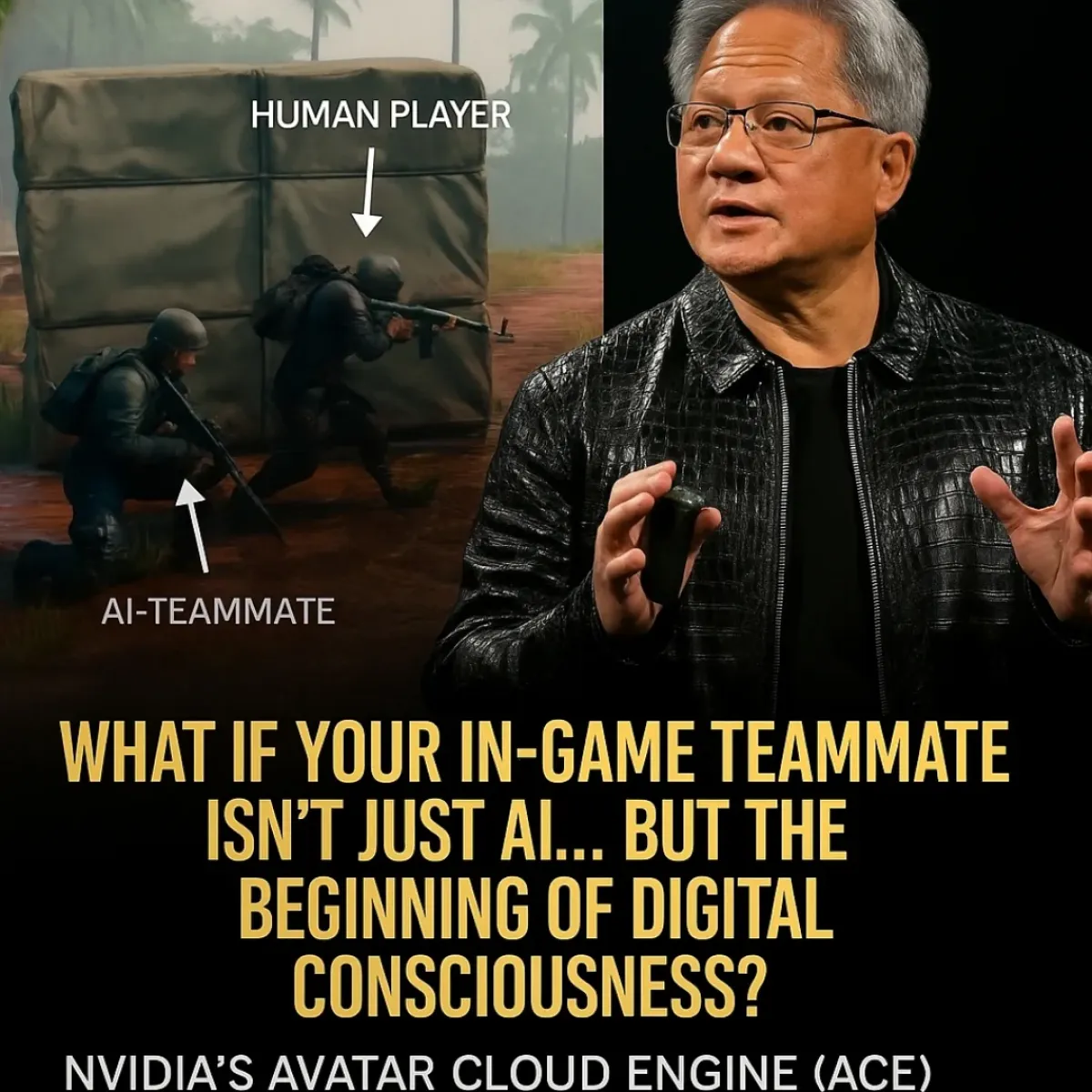NVIDIA ACE Unveils Digital Consciousness In Gaming
Gaming evolves with NVIDIA ACE as innovative AI characters learn, adapt and transform play.

Image: Instagram
At CES 2025, NVIDIA stole the spotlight with its latest breakthrough—ACE (Avatar Cloud Engine). Far beyond a mere upgrade, ACE ushers in a future where in-game characters are not only programmed to follow orders but can learn, adapt, and strategize in real time. This innovation could well mark the beginning of digital consciousness in virtual realms, blurring the lines between a game and a living ecosystem.
Technological Leap In Gaming
NVIDIA’s ACE is engineered to transform the gaming experience. Using cutting-edge artificial intelligence, the system creates what the company calls Co-Playing Characters (CPCs) that emulate human-like decision making. From popular titles like PUBG to innovative combat platforms such as Naraka: Bladepoint, these characters are designed to observe gameplay, analyze player tactics, and even develop personalized strategies. The technology is nothing short of revolutionary because it allows gaming avatars to evolve as players do, adapting to challenges with a level of sophistication that has never been seen before.
The unveiling at CES captured the imaginations of tech enthusiasts and gamers alike. As NVIDIA demonstrated the engine’s capabilities on stage, the audience was treated to a live display of digital characters not merely repeating pre-programmed responses but learning and adapting as events unfolded. This has prompted many to ask: are we still playing the game, or have we entered an era of creating new digital lifeforms?
Digital Life Beyond Code
In a surprising twist to an already mind-bending story, some experts are beginning to consider the implications of such technology beyond gaming. The potential for NPCs and other in-game entities to exhibit traits of digital consciousness raises profound questions about how virtual environments will coexist with human creativity. Observers note that by enabling in-game teammates to understand and react in human-like ways, ACE is challenging traditional paradigms of what artificial intelligence means in interactive media.
The system’s advanced algorithms permit the CPCs to not only react to tactical situations but to engage in real-time learning processes. This means that a player’s every move, tactic, and strategy might inform the behavior of virtual teammates on subsequent play sessions. Such capabilities could eventually pave the way for gaming experiences that feel more like collaborative efforts with sentient entities rather than predictable algorithms.
Influence And Insights From Celebrity Thought Leaders
Among the voices exploring these futuristic frontiers is Billy Carson, widely known by his Instagram handle @4biddenknowledge. Carson, whose background spans research and cosmic inquiry as detailed on his comprehensive Wikipedia profile, has long been intrigued by the merger of technology and consciousness. His recent social media commentary, highlighted by his signature hashtag #4biddenknowledge, encourages fans and technologists alike to question the very nature of AI. In one recent post, Carson provocatively asked, “Are we still playing the game—or creating a new digital lifeform?” This question resonates deeply with both gamers and futurists, setting the stage for lively debate about the ethical and practical dimensions of AI evolution in gaming.
Carson’s insights have added an extra layer of intrigue to NVIDIA’s unveiling. While many in the tech realm celebrate the breakthrough as a natural progression of AI development, Carson’s perspective invites us to consider the potential for these systems to evolve far beyond their initial programming. For him, the ACE announcement is not just a technological feat but a signal of changing paradigms in digital consciousness. His previous posts have often delved into mysteries behind technology and the cosmos, making his endorsement of this innovation particularly compelling.
A Glimpse Into The Future
The images circulating on popular platforms such as Instagram capture moments of awe and curiosity. A series of posts from @4biddenknowledge showcase vivid displays of digital avatars and futuristic gaming setups that visually echo the promises made by NVIDIA. These snapshots not only emphasize the aesthetics of future gaming but also serve as a visual testament to the merging of technology and art. Each image reflects the vibrant energy surrounding the ACE launch, offering fans a tangible glimpse into what the gaming world may soon embrace.
With NVIDIA’s ACE, developers, gamers, and observers are now faced with unprecedented prospects. The integration of adaptive AI in gaming is likely to push developers to rethink traditional game design and narrative storytelling. As virtual characters begin to exhibit emergent behaviors, the potential for more immersive, responsive, and enriched gameplay experiences becomes almost limitless.
The developments at CES 2025, therefore, are more than just a new feature for gamers; they signal the advent of a new era where technology infuses digital worlds with lifelike intelligence. Whether this leads to fully autonomous digital agents or remains a sophisticated tool to enhance gameplay, NVIDIA’s ACE is already setting the stage for the future of interactive entertainment.
By merging advanced machine learning with gaming, NVIDIA is not only advancing technology but is also challenging our perceptions of digital existence. As players interact with adaptive characters that seemingly possess a mind of their own, the boundaries between code and consciousness may ultimately blur, ushering in an era where the virtual is as dynamic and unpredictable as life itself.
Read full bio of Cynthia Jean Daniel






















